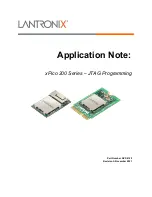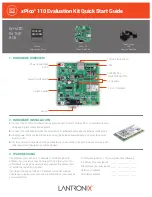
Nations Technologies Inc.
Tel
:
+86-755-86309900
:
Address: Nations Tower, #109 Baoshen Road, Hi-tech Park North.
Nanshan District, Shenzhen, 518057, P.R.China
58
/
631
The frequency of the LSE oscillator must be higher than 30KHz to avoid false detection of LSECSS.
RTC clock
By programming RCC_LDCTRL.RTCSEL[1:0] bits, the RTCCLK clock source can be either the HSE/32, LSE, or
LSI clocks. This selection cannot be changed unless the low power domain is reset.
Before configuring the RTC clock source, the PWR_CTRL1.DRBP bit must be set to 1 to cancel the write protection.
The LSE and LSI clocks are in the low power domain, but the HSE clocks are not. therefore:
If LSE or LSI is selected as RTC clock:
If the V
DD
supply is switched off, the RTC cannot continue to work
If the HSE clock divided by 32 is used as the RTC clock:
When in Stop2 or Standby mode, the RTC state is indeterminate.
Watchdog clock
If the IWDG is started by either hardware option or software access, the LSI oscillator will be forced ON and cannot
be disabled. After the LSI oscillator is stabilized, the clock is provided to the IWDG.
Clock output (MCO)
The microcontroller clock output (MCO) capability allows the clock signal to be output onto the external MCO pin.
The corresponding GPIO port register must be configured for the corresponding function.The following 7 clock
signals can be selected as the MCO clock:
SYSCLK
HSI
HSE
PLL
LSI
LSE
MSI
The clock selection is controlled by RCC_CFG.MCO[2:0] bits.
The MCO output clock frequency division selection is realized by configuring the RCC_CFG.MCOPRES[3:0] bits.
RCC Registers
The RCC registers are accessible through AHB bus. The register description is as follows.
















































